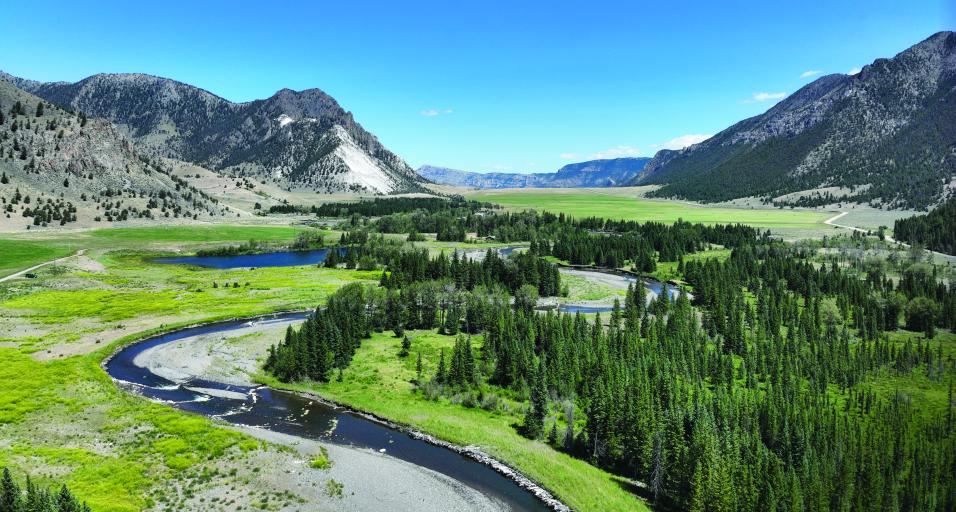When people think of Wyoming, high mountain peaks, majestic open plains and sweeping landscapes covered in sage might be the main things that come to mind. Although these grand vistas are what residents and visitors love about Wyoming, hidden in these landscapes are wetlands and riparian habitats that are fragile and vital to Wyoming’s wildlife.
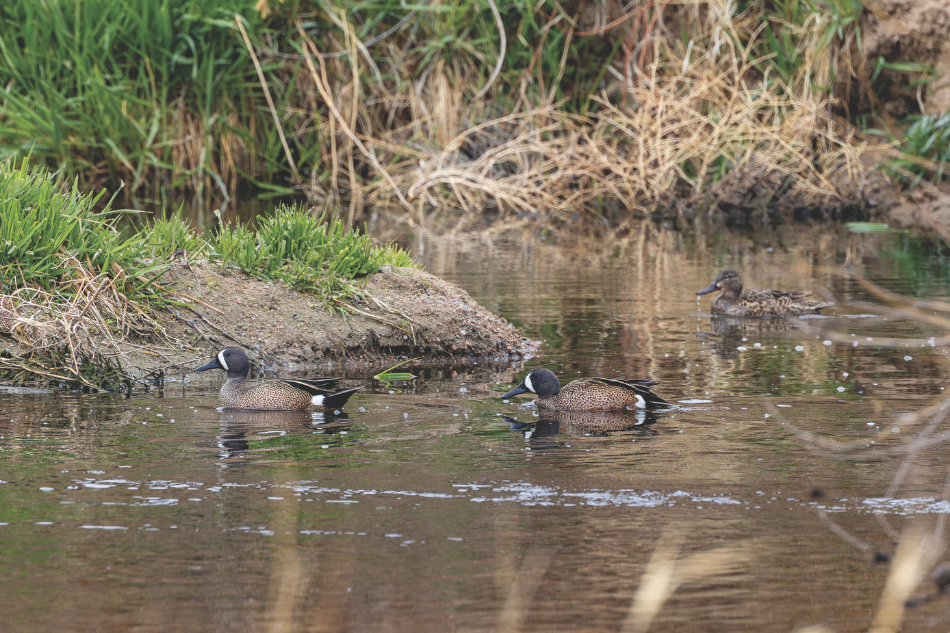
Waterfowl like these blue-winged teals are often spotted in Wyoming's wetlands. (Photo by Patrick Owen/WGFD)
In a state where moisture is more likely to evaporate than be replaced by annual precipitation, wetlands and riparian habitats provide pockets of water and biodiversity that are imperative to hundreds of wildlife species.
Wetlands are areas saturated by surface or groundwater at some point during the year. This can be on a permanent basis or seasonally. Wetlands are often compared to sponges. The ground where the wetland is located soaks up water and stores it, making these areas essential for helping regulate water flow and keeping water present on the landscape. Hydrophytes, or water-dwelling plants, grow in abundance in these areas as well as other shrubs and grasses.
Riparian habitats, also known as riparian corridors, are sometimes considered wetlands, depending on various factors. These habitats are adjacent to flowing water or bodies of water. This includes streams, rivers and lakes. They are transitional ecosystems that provide habitat for aquatic and terrestrial species. Depending on the location, vegetation growth may include evergreen, birch and cottonwood trees, willows and a variety of grasses and other deep-rooted plants that grow along banks, floodplains and shorelines.
CONSERVATION EFFORTS
Tom Peterson is the Ducks Unlimited manager of conservation programs for Wyoming and western Nebraska. His work involves the conservation of major wetland complexes on public and private land.
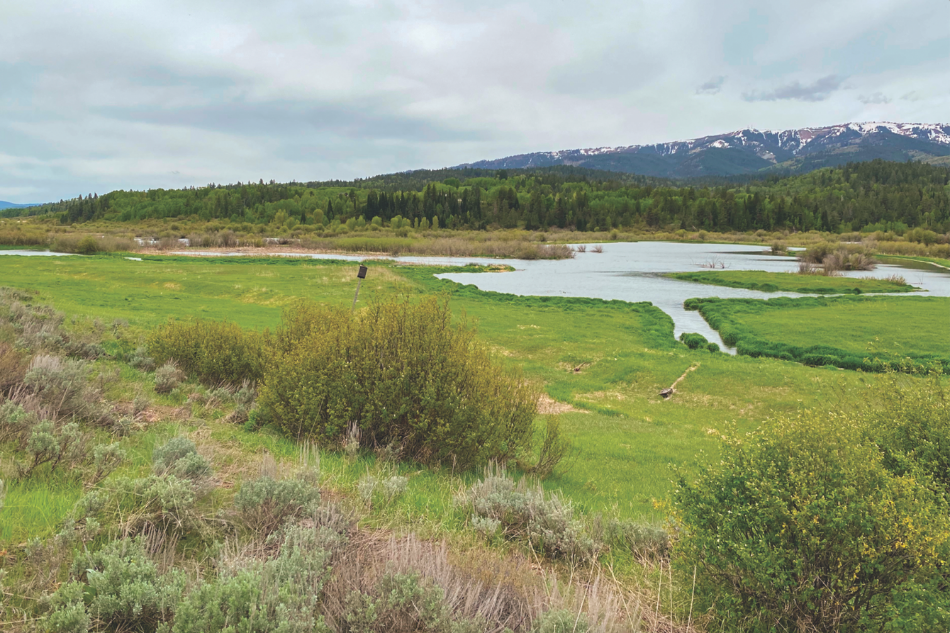
Ducks Unlimited and the Wyoming Game and Fish Department are collaborating on a project for improvements at the Alpine Wetlands Complex in western Wyoming. The work will help reduce sediment loads and improve water control for the wetland. (Photo by Tom Peterson/Ducks Unlimited Inc.)
“Wetlands are the lifeblood of Wyoming,” Peterson said.
Peterson added wetlands provide habitat for hundreds of species of wildlife including terrestrial, waterfowl, migratory birds, fish and amphibians. Invertebrates such as insects and crustaceans also benefit from these areas.
Wetlands and riparian corridors are critical for birds and ungulates during migration, Peterson said. While these locations can provide crucial habitat to wildlife species year-round, they are particularly critical during fall and spring migrations.
“These habitats are refueling opportunities,” Peterson said, as they provide an abundance of forage for wildlife so they have the energy needed to reach their destinations.
These habitats are delicate, and a loss of availability along a migration route means wildlife miss an opportunity to regain the energy needed to continue their journey. Peterson said a reduction in nutrition would cause poor body condition which could ultimately affect future populations and population stability. This is one of the reasons the conservation of wetlands is so imperative.
One of the main challenges facing these habitats is the loss of land through development or change in land-use practices. Peterson said when people think of wetlands, they often think of open water such as lakes and reservoirs. However, shallow wetlands are some of the most beneficial wetlands for migrating wildlife.
Meadows in spring when they are lush and covered with excess water from runoff are a natural shallow wetland. But there are places that can mimic these wetlands, Peterson said. This includes fields where a landowner practices flood irrigation. This practice mimics a natural meadow and provides a rich source of food for wildlife.
Shallow wetlands can be temporary and seasonal, meaning they might be dry during the growing season. But from a forage perspective, they are one of the most important but often overlooked types of wetlands available to wildlife. Peterson mentioned invertebrates and amphibians benefit from these habitats, and something as simple as changing from flood irrigation to a center pivot can reduce the water on the landscape and lower the availability for migrating wildlife. One area of Peterson’s work includes helping private landowners explore irrigation practices that enhance opportunities for wildlife along with cost-share options.
“Ducks Unlimited tries to replace what wetlands or riparian corridors may have been historically on the landscape,” Peterson said.
Ducks Unlimited and the Wyoming Game and Fish Department have worked together on several projects around the state. They have completed diversion projects to allow fish passage and irrigation infrastructure improvements. “Working with a conservation partner helps all involved to find common ground and maximizes the project benefits,” Peterson said.
Currently, DU and Game and Fish are collaborating on a project for improvements at the Alpine Wetlands Complex in western Wyoming. One of the main focuses of this project includes replacing the main diversion off of the Salt River that feeds the wetland system. This will help reduce sediment loads and improve water control for the wetland.
“There is never a finish line,” said Peterson about the ongoing efforts for conservation and restoration of wetlands around Wyoming.
Not only does Peterson’s work with DU enhance conservation efforts for habitat and wildlife, it provides increased opportunities for public access and recreation to these areas. Hunting, fishing, wildlife viewing, birdwatching and photography are a few of the activities people can enjoy, and it is necessary to have these areas available for the public.
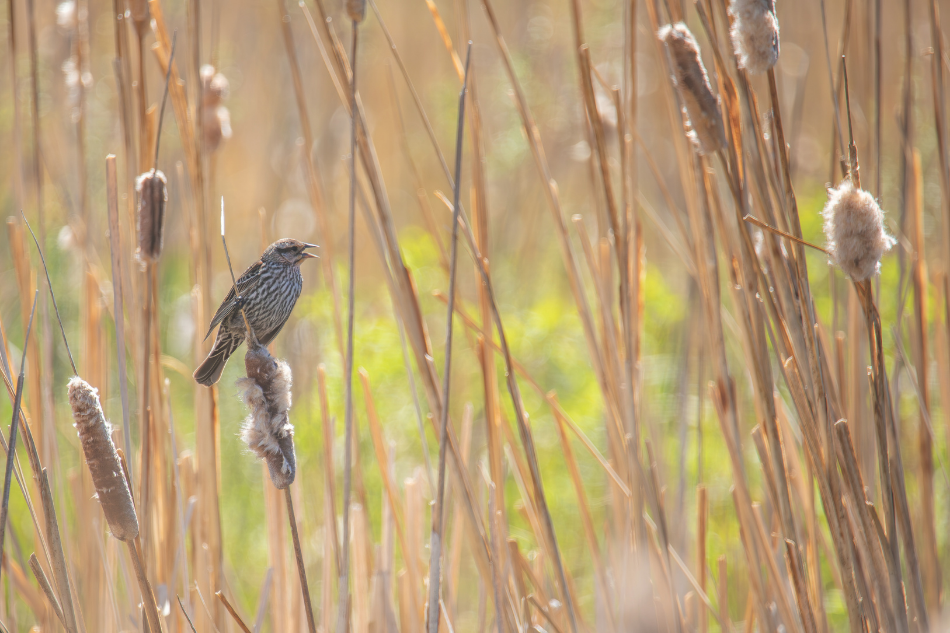
A female red-winged blackbird perches on a cattail at the John/Annie Woodhouse Wildlife Habitat Management Area. The management objective of this WHMA is to maintain and improve wetland and riparian lands that enhance water quality for Cheyenne's raw water source. (Photo by Patrick Owen/WGFD)
RIPARIAN RESTORATION
“Riparian habitats are some of the most diverse and complex terrestrial habitats in the world,” said Macy Jacobson, a graduate student at the University of Wyoming in the Monteith Shop. “They provide hotspots of biodiversity and are critical habitat for all life cycles of some wildlife.”
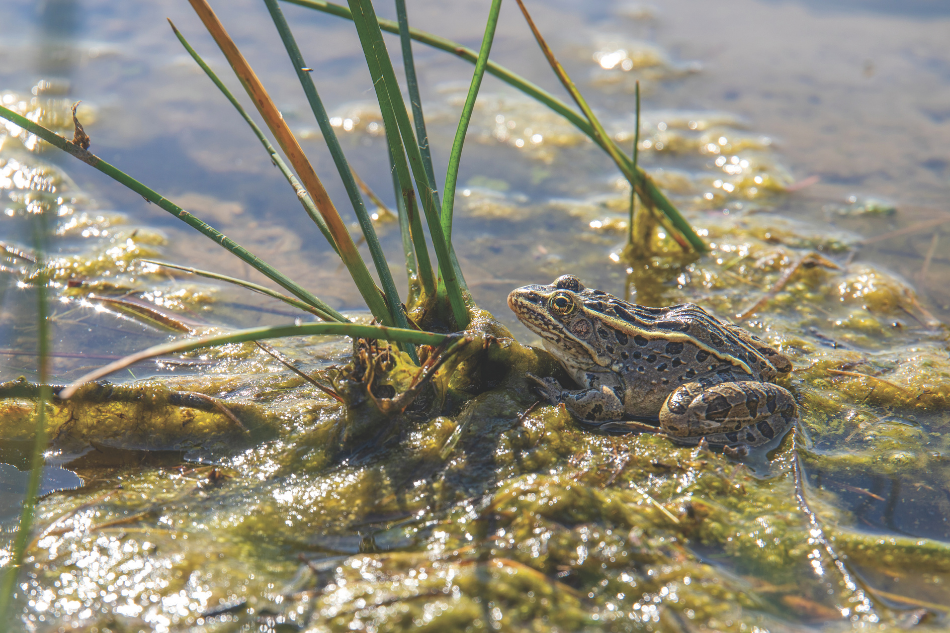
Amphibians like this leopard frog benefit from shallow-wetland habitats. (Photo by Patrick Owen/WGFD)
As part of her graduate work, Jacobson studies the impacts of beavers on ecosystems in Wyoming.
Since riparian habitats include a flowing source of water such as a stream, she explains nutrients and energy are cycled from the stream into the habitat and back again. It is a cyclic process that keeps the habitat rich in nutrients. Jacobson describes how these habitats are patches of resources on the landscape connected by flowing water, and also have high use by wildlife along migration corridors.
However, there is one furbearer that likes to stick around and develop the area.
“Beavers are awesome,” Jacobson said. “It all starts with building a dam.”
Beavers influence the groundwater and raise water tables when they put their building skills to work and create a dam that causes the stream or river to flow slower, sometimes creating a beaver pond that becomes a home for wildlife other than the beaver.
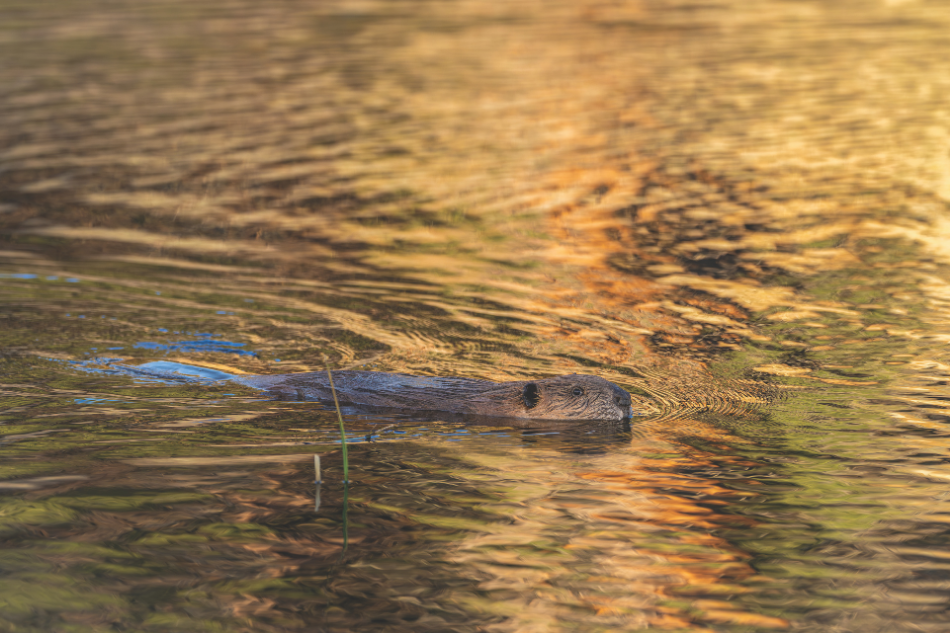
Beavers play an important role in maintaining healthy riparian areas. (Photo by Patrick Owen/WGFD)
Not only is a beaver pond a great place for fish, but dams play a key role in storing water on the landscape for longer periods of time and can help extend water on the landscape. For instance, Jacobson said, even though a dam is in place, water that continues to flow and eventually overfill the beaver pond is used to refill pockets where groundwater is stored.
Part of Jacobson’s research includes microclimates in riparian habitats. She said the microclimate of riparian habitats are generally cooler, more stable and create a thermal refuge for wildlife. Moose are one animal that often benefits from these microclimates.
“Moose are heat sensitive and they don’t sweat,” Jacobson said. Since their dark coat soaks up the sun on a hot, summer day, instead of standing out in the open they seek the wet ground and shade a riparian habitat offers. Jacobson said her graduate colleagues in Monteith’s Shop have found this behavior is a form of thermoregulation that helps moose cope with high temperatures.
Jacobson credits beavers with influencing the thermal landscape in these areas. Essentially a microclimate that is cooler and more stable influences vegetation growth and hydrology of the habitat. When a beaver builds that dam and the pond fills with water, this produces a win-win for the landscape, plant growth and wildlife.
But, Jacobson points out, due to habitat and water loss, a large percentage of riparian habitats have disappeared, and what is left is often degraded and fragmented. This leads to a loss of nutrient cycling, water storage and vegetation production.
Beavers help out with this problem, too.
“Beavers dig channels laterally from the pond to move logs, but these also end up connecting floodplains. This increases the total area of surface water and the size of the habitat area,” Jacobson said.
Although beavers are not found in all riparian habitats, when they are, they provide prospects that may help improve the area.
— Molly Bredehoft is the tooth aging coordinator for the Game and Fish’s Forensic and Fish Health Lab in Laramie. This is her first story for Wyoming Wildlife.

